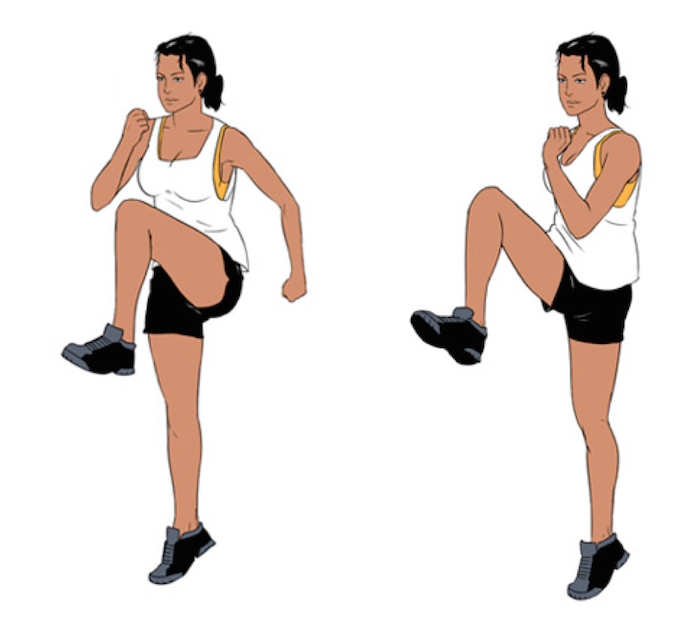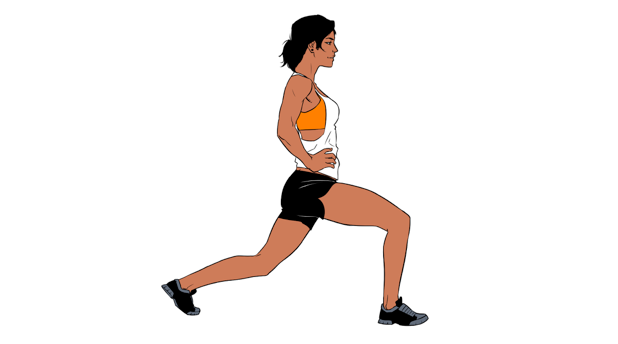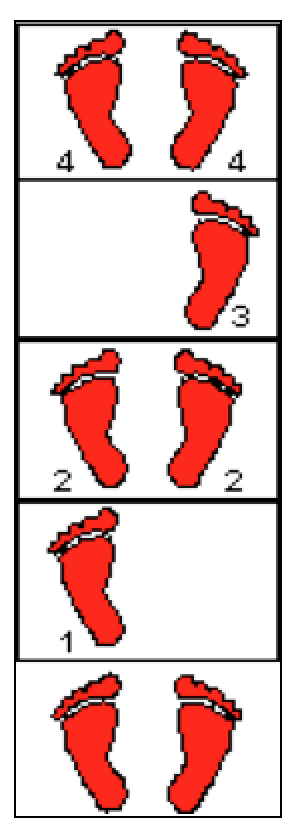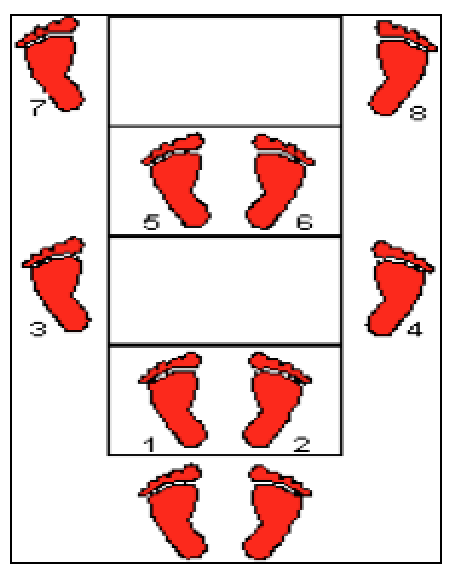8 Dynamic Warm Up Exercises You Should Master
By Radiant HealthPublished: August 12, 2015

Fitness
A warm up is how you prepare the body and mind for the physical activity ahead. You should always execute a solid warm up to get you into the exercise groove and also to prevent you from being injured during the activity.
You may choose to do a general warm up which consists of movements that are not specific to the activity that is being performed or a specific warm up which consists of specific movements that often mirror the movements of the activity e.g. squatting and lunges for weight training.
Benefits of a warm up
The warm up boasts many benefits:
- It increases the blood flow and oxygen delivery to the working muscles
- It increases your muscle temperature
- It reduces the resistance to blood flow in your arteries and this places less pressure on your heart
- It increases your joint’s range of motion
- It balances the hormones ready to regulate energy production
- It mentally prepares you for the task ahead.
Phases of the warm up
The first phase of the warm up is the cardiorespiratory phase and you should perform this for 5-10 minutes e.g. jogging on a treadmill or using the exercise bike. You should perform the exercises at low to moderate intensity and the main objective of this phase is to steadily increase your heart rate, breathing rate, tissue temperature and to mentally prepare you for the training session ahead.
Traditionally after this phase many people perform static stretches. However, there is some robust scientific evidence to suggest that static stretching (stretching while the body is at rest) does not enhance performance or prevent injuries and may actually compromise your athletic performance.
Dynamic stretching
Dynamic stretching — stretching while body is in motion — does not show the same ‘negatives’ as static stretching, and they should be used as a substitute for your static stretching routine. The dynamic stretching phase should last for about 8-12 minutes and the exercises should focus on the movements that resemble the activity e.g. high knees when running. Here are some dynamic stretches to perform when warming up:
1. High Knees
Advice on Technique
- Stand tall
- Lift your left arm and right leg as if you are about to run on the spot
- Keep alternating this movement raising the knees high towards the chest
- Maintain a tight core throughout the exercise by pulling your belly bottom towards the spine
2. Glute Kicks
Advice on Technique
- Start by standing on one leg with the other leg bent back at the knee
- Jump up switching position by bringing the planted leg up to kick the glutes and landing on the other leg
- Repeat this action
- Keep the back straight and knees soft when landing
3. Lunges
Advice on Technique
- Begin standing tall with legs hip width apart
- Step forward with your right leg and bring the left foot on to tip toes behind you
- Start to lower your left knee to the floor making sure your right knee does not go over your right foot
- Aim for a 45 degree angle with your right leg
- Hold this position for five seconds then return your legs back to the neutral position
4. Hip Side Kicks
Advice on Technique
- Begin by standing tall legs hip width apart
- Rest your hands on your hips for support
- Begin to extend your leg out slowly to the side raising up to hip level if capable
- Hold and gently return your leg to the start position
- Repeat five times then move on to the opposite leg
- With the stationary leg make sure that remains tall and straight, be aware not to kick out from the stationary hip
- Try not to overstrain and keep your body balanced
- You can use a wall support if needed
5. Arm Circles
Advice on Technique
- Standing tall with legs hip width apart and soft knees and arms down by your side
- Keep the back of your neck long, start to raise your arms out in front of you to shoulder height, continue to stretch your arms up towards the ceiling and gently backwards finishing off with your hands back down by your side
- Slowly continue with this motion, inhaling as you stretch your arms up, exhaling on return down
- Repeat in the opposite direction
- Remain tall and upright with engaged your core muscles to help support the lower back
6. Leg Swings
Advice On Technique
- Stand sideways and hold onto a wall or a partner with right hand
- Place weight on left leg
- Swing right leg forwards and backwards from hip
- Keep your back and torsi straight
- Repeat 20 times and swap legs
The sports specific phase
The dynamic stretch phase should be followed by sport specific drills that include jumping, bouncing and sprint drills. This phase should last for a maximum of 10 minutes. A top tip is that the warm up should be gradual and progressive to increase your muscle temperature and not to induce fatigue by tapping into your energy reserves. Below are some speed, agility and quickness drills using a SAQ ladder.
Sport specific drills
Ladder agility drills are a superb method of improving speed, coordination and agility. The SAQ ladder is all about form, quality of movement and not overload. These drills are an excellent warm up strategy, as your muscles should be fresh to be performing them and not fatigued e.g. after an endurance or resistance session. During the drills try to follow these simple guidelines on technique:
- Drive off from the balls of your feet and your foot should never flat in contact with the ground
- Pump your arms form chest height to hips
- Your elbows should remain at ninety degrees throughout each drill
- Relax your arms, shoulders and hands
Agility Drill 1: Hop Scotch Drill
Let’s see if you can remember how to do hop scotch? Do you really need some advice on this technique? Go on see if you can work it out?
Agility Drill 2: In and Out Drill
Follow the diagram above and remember to focus quick feet and a fluid motion. Also calculate the number of runs in the SAQ ladder and relate the movement patterns in the diagram above.
For more fitness tips, join our free weekly newsletter and receive a FREE 10-day guide to a leaner body, clearer skin and more radiant glow. Download here.

- 11 Best Health and Wellness Books to Read in 2024 - July 4, 2024
- Some Americans Will Have Medical Debt Wiped From Credit - July 9, 2022
- Natural Gas Used to Heat Homes Contains Some Harmful Chemicals - July 9, 2022
- Uterine Cancer Claims Many Black Lives - July 9, 2022
- Babies and Toddlers Get COVID-19 Shots - June 27, 2022
- FDA Bans Juul’s E-Cigarettes and Cartridges - June 27, 2022
- Polio Virus Found in London Sewage - June 27, 2022
- 200 Million Americans Are Drinking Contaminated Water - June 19, 2022
- Young Kids Can Finally Get Vaccinated Against COVID-19 - June 19, 2022
- New Regulations for Baby Sleep Products - June 19, 2022















